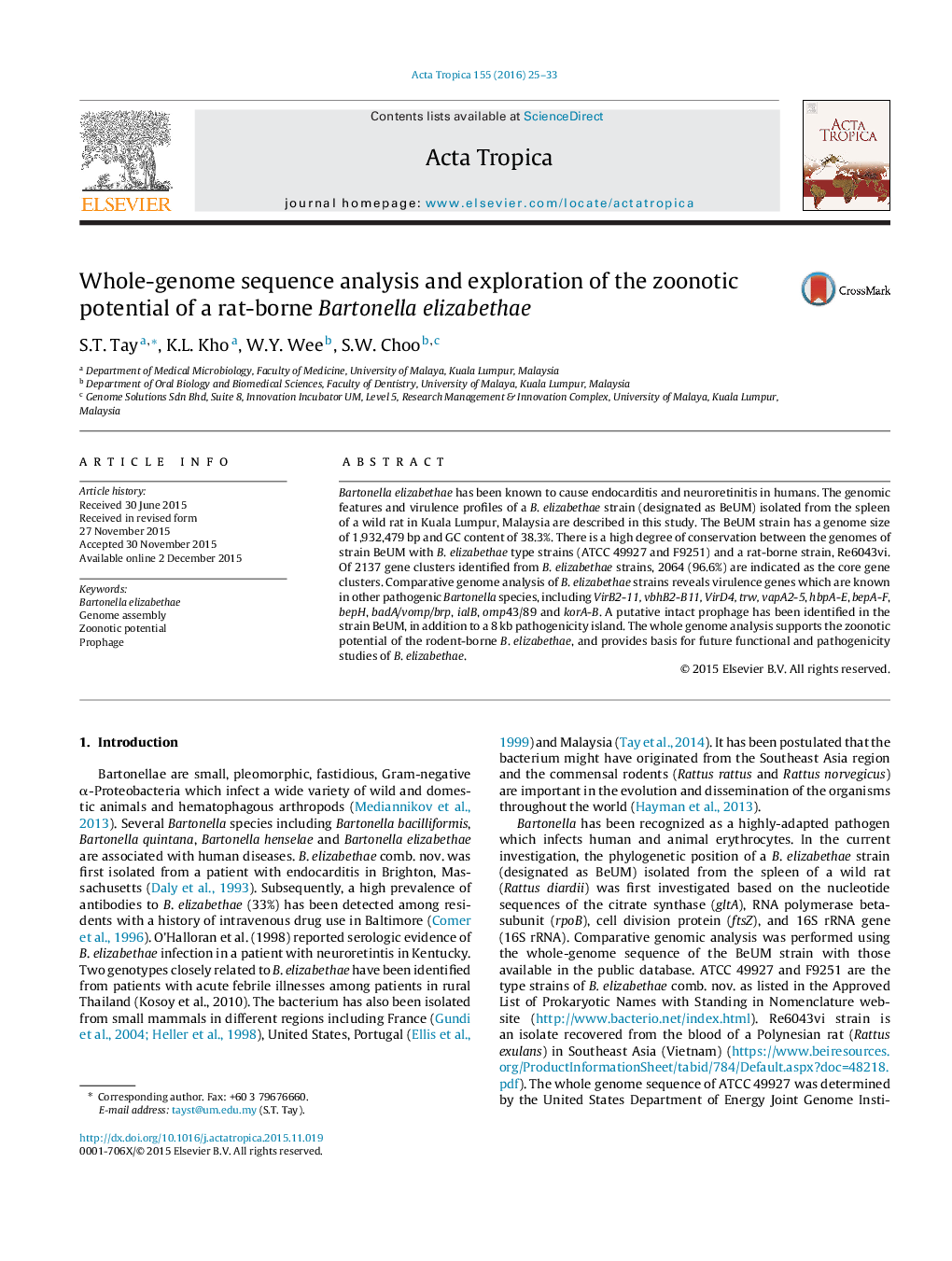| Article ID | Journal | Published Year | Pages | File Type |
|---|---|---|---|---|
| 3393767 | Acta Tropica | 2016 | 9 Pages |
•We describe the first whole genome analysis of a rat-borne B. elizabethae strain.•The genomes of rat-borne and human strains are highly conserved.•Putative virulence genes of B. elizabethae were identified.•The data supports the zoonotic potential of rodent-borne B. elizabethae.
Bartonella elizabethae has been known to cause endocarditis and neuroretinitis in humans. The genomic features and virulence profiles of a B. elizabethae strain (designated as BeUM) isolated from the spleen of a wild rat in Kuala Lumpur, Malaysia are described in this study. The BeUM strain has a genome size of 1,932,479 bp and GC content of 38.3%. There is a high degree of conservation between the genomes of strain BeUM with B. elizabethae type strains (ATCC 49927 and F9251) and a rat-borne strain, Re6043vi. Of 2137 gene clusters identified from B. elizabethae strains, 2064 (96.6%) are indicated as the core gene clusters. Comparative genome analysis of B. elizabethae strains reveals virulence genes which are known in other pathogenic Bartonella species, including VirB2-11, vbhB2-B11, VirD4, trw, vapA2-5, hbpA-E, bepA-F, bepH, badA/vomp/brp, ialB, omp43/89 and korA-B. A putative intact prophage has been identified in the strain BeUM, in addition to a 8 kb pathogenicity island. The whole genome analysis supports the zoonotic potential of the rodent-borne B. elizabethae, and provides basis for future functional and pathogenicity studies of B. elizabethae.
